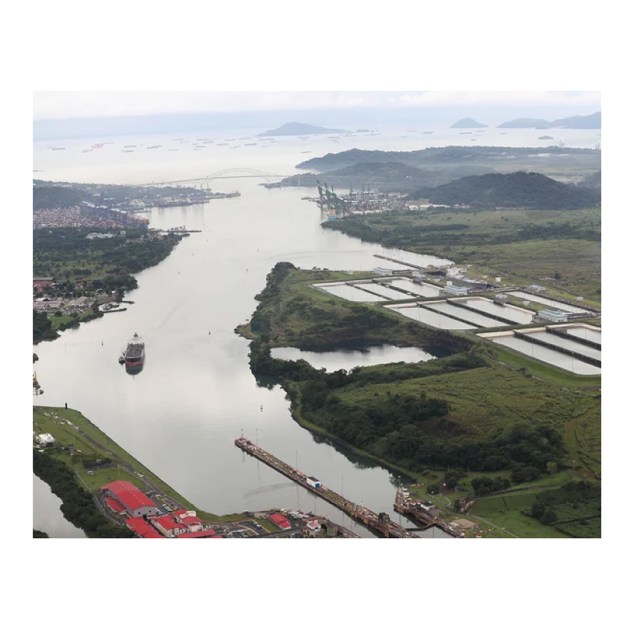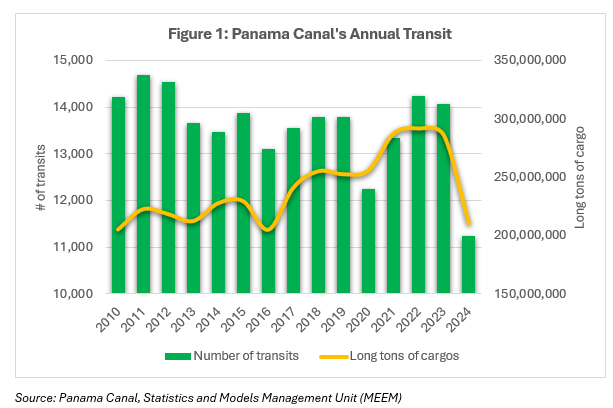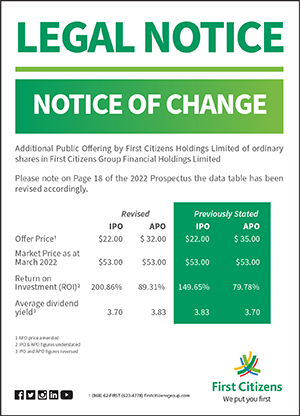The Panama Canal: A Global Trade Artery Under Pressure
Commentary

A Century-Old Waterway at the Heart of 21st-Century Trade
Few infrastructural projects in history have wielded as profound an influence on global trade as the Panama Canal. Since its opening in 1914, this 82-kilometer passageway has transformed maritime logistics by linking the Atlantic and Pacific Oceans, cutting travel time for shipping vessels by thousands of miles. More than a feat of engineering, the Canal is an economic lifeline for Panama and a strategic lever in the balance of global power. In today’s interconnected economy, the Panama Canal is facing unprecedented pressure, from intensifying geopolitical competition and rising environmental threats to shifting global trade patterns. What was once a symbol of efficiency and connectivity is now at the crossroads of 21st-century economic, ecological, and diplomatic challenges. As global superpowers compete for influence and climate change disrupts historical water levels, the Canal’s role is evolving rapidly, revealing both its strength and its vulnerability.
The Geopolitical Chessboard: U.S.-China Rivalry and Strategic Infrastructure
The economic significance of the Panama Canal cannot be separated from its geopolitical context. For decades, the United States (U.S.) maintained strong influence over the Canal Zone, operating the Canal until its handover to Panama in 1999. However, with the rise of China as a global superpower, a new chapter of strategic competition has emerged, centered not only on military might or trade tariffs, but increasingly on control of infrastructure and access to key global trade routes.
During Donald Trump’s presidency (2017–2021), these tensions escalated dramatically. Under the “America First” policy, the U.S. grew wary of China’s Belt and Road Initiative (BRI), a sweeping global infrastructure strategy aimed at expanding Beijing’s influence through investment and diplomacy. In 2017, Panama switched diplomatic recognition from Taiwan to the People’s Republic of China, a move that stunned U.S. policymakers and signalled Beijing’s growing sway in the region.
Since then, Chinese state-linked firms have secured contracts to build and manage logistics parks, deep-water ports, and even fibre-optic networks in Panama. Although the Canal remains under Panamanian control via the Panama Canal Authority (ACP), Washington is concerned that China’s surrounding economic influence could one day compromise the security or neutrality of the waterway. This is especially concerning given that over 60% of all vessels transiting the Canal are either bound to or departing from U.S. ports.
From an economic lens, influence over infrastructure near the Canal could offer strategic advantages, such as preferential access, pricing leverage, or even soft coercion through supply chain disruptions. In the evolving arena of geo-economics, the Panama Canal is more than a passage, it is a power projection platform.
A Global Lifeline: Economic Significance of the Panama Canal
The Panama Canal is a fulcrum of international trade. Each year, more than 14,000 vessels transit the waterway, carrying approximately 330 million tons of cargo. According to the IMF and World Bank, the Canal facilitates between 3% and 5% of global maritime trade annually, making it one of the most vital logistics corridors in the world.
Its importance is particularly pronounced in trade between the U.S. East Coast and Asia, which accounts for around 40% of total Canal traffic. For example, a container ship traveling from Shanghai to New York via the Canal saves nearly 7,000 kilometres compared to sailing around Cape Horn, translating to two weeks of travel time, millions of dollars in fuel savings, and reduced emissions.
The Canal is crucial for bulk commodities and energy supplies as well. The U.S. Gulf Coast’s liquefied natural gas (LNG) exports have increasingly depended on the Canal to reach Asian markets. Meanwhile, agricultural exports from the American Midwest, such as soybeans and corn, benefit enormously from the Canal’s efficiency, enabling competitive pricing in global markets.
The 2016 completion of the USD5.25 billion Neopanamax expansion, adding a third set of locks, was a game-changer. It allowed vessels up to three times larger to transit, effectively doubling capacity and boosting toll revenues. Container throughput surged as a result, with larger vessels bringing economies of scale that drive down per-unit transport costs and support the growth of global e-commerce and just-in-time delivery systems.

Panama’s Economy: Built Around the Canal
For Panama, the Canal is not just an infrastructure asset, it is the bedrock of national development. The service economy, which includes logistics, banking, tourism, and shipping, makes up more than 70% of Panama’s GDP, with the Canal at its core.
In fiscal year 2024, the Canal generated approximately PAB4.99 billion, with PAB2.47 billion directly contributed to the national treasury, according to the Panama Canal Authority. These funds finance public investments in infrastructure, education, healthcare, and economic development. Beyond its fiscal contributions, the Canal supports a vast ecosystem of economic activity. A 2023 IDB Invest study estimated that the Canal accounts for nearly 7.7% of the country’s GDP when accounting for direct, indirect, and induced impacts.
Employment is another key dimension. The Canal directly and indirectly supports nearly 55,000 jobs, roughly 2.9% of the national labour force. These roles range from high-skilled engineering and maritime services to logistics, maintenance, and administration. Moreover, the Canal acts as a magnet for foreign direct investment (FDI) and has helped turn Panama City into a logistics hub for the Western Hemisphere.

Rising Tide of Challenges: Climate Change and Operational Disruption
Despite its success, the Panama Canal faces mounting operational challenges, chief among them: water scarcity. Unlike sea-level canals such as the Suez, the Panama Canal operates through a lock system that depends heavily on freshwater to lift ships over the Isthmus. Each transit consumes about 52 million gallons of water, sourced from the Gatun and Alajuela lakes.
Climate variability has placed this system under intense stress. In 2023 and 2024, Panama experienced its worst droughts in decades, attributed to El Niño and climate change. Water levels in Gatun Lake reached historic lows, forcing the ACP to reduce daily ship transits from 36 to as few as 24, and to impose strict draft limitations that reduced cargo capacity on each ship.
The ripple effects were felt worldwide. Shipping companies rerouted vessels, insurance premiums surged, and freight rates spiked, costs that ultimately cascaded down to businesses and consumers. For Panama, the reduction in transits resulted in lost revenue, threatening its fiscal stability and undermining its capacity to fund infrastructure projects and climate adaptation efforts. According to UNCTAD, from January to July 2024, the average rate on the Shanghai Containerized Freight Index (SCFI) for the Shanghai-South America route more than doubled, reaching USD9,026 per twenty-foot equivalent unit (TEU), the highest level since September 2022. The Shanghai-South Africa route saw its average rate nearly triple, reaching USD5,426 per TEU, while the Shanghai-West Africa route saw a 137% increase, with an average rate of USD5,563 per TEU.
If droughts continue to intensify, the economic sustainability of the Canal could come into question. Long-term solutions such as new reservoirs, desalination plants, or a reengineered water system are technically possible, but require substantial investment and international cooperation.

Conclusion: Steering Through the Crosscurrents of the Future
As global trade continues to evolve in complexity, velocity, and scale, the Panama Canal remains a critical node in the world’s supply chain architecture. Its ability to facilitate commerce, connect continents, and generate national income is unmatched. Yet, the Canal’s future will not be determined solely by ships or locks, but by how the world addresses the intersecting challenges of climate change, geopolitical tension, and sustainable development.
For Panama, preserving the Canal’s functionality means safeguarding its economic future. For the world, it is a test of how vital infrastructure can adapt in the face of rising uncertainty. As the international community grapples with fractured trade relationships, environmental instability, and the reshaping of global alliances, the Panama Canal stands not only as a passage between oceans, but as a barometer of global resilience.
In the decades ahead, those who control access, innovate solutions, and forge partnerships around this crucial artery will influence the course of global commerce itself. The Panama Canal may be narrow in width, but its reach and significance remain vast.
DISCLAIMER First Citizens Bank Limited (hereinafter “the Bank”) has prepared this report which is provided for informational purposes only and without any obligation, whether contractual or otherwise. The content of the report is subject to change without any prior notice. All opinions and estimates in the report constitute the author’s own judgment as at the date of the report. All information contained in the report that has been obtained or arrived at from sources which the Bank believes to be reliable in good faith but the Bank disclaims any warranty, express or implied, as to the accuracy, timeliness, completeness of the information given or the assessments made in the report and opinions expressed in the report may change without notice. The Bank disclaims any and all warranties, express or implied, including without limitation warranties of satisfactory quality and fitness for a particular purpose with respect to the information contained in the report. This report does not constitute nor is it intended as a

